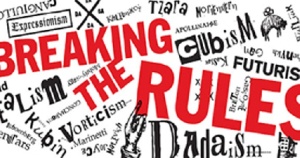
We could talk specific foods ingested, numbers of times a day, eat this-not that, caloric intake, etc. Sure. Dissecting nutrition makes a difference. Knowledge is power, but over-think it, and you might end up neurotic about food. The Puritanical roots of our all or nothing culture places food into good and bad categories, fostering patterns of emotional eating, binging, guilt complexes, eating disorders, etc. It’s no way to live and eventually we all crash and burn.

Truth is lots of things lend to well-being. It’s not just calorie counting on a plate and minutes counted at the gym. We need activity (unplug more often), natural nutrition (processed foods sparingly), stress regulation, and an understanding of societal ideals on daily life.
BUT…
If you are looking for one big universal answer on how to best handle food and nutrition, I have it. Going back thousands of years, when it comes to food, it’s the real secret to a healthy, fitter you, in mind and body:
Relax. Take pleasure in your food.

Love food and all the ceremony and community that goes with it. Adore wine, meat, bread, chocolate, avocados, whatever. It’s fine. Heck, it’s healthy! Relax already about calories. And please! Stop forcing down quick bars with everything you need…you don’t really need it. Invest time into real food as much as possible. Use mealtime to celebrate seasonal delights. The appreciation comes from the same place, whether it be the perfect granny smith in October or the perfect bite of a dark chocolate. Taking pleasure in food creates a magical experience where flavor rules over quantity. The need for more diminishes.

This is not to say it is necessarily an easy switch. It’s a lifestyle change. Mealtime, food, and even community must be given more space in our daily routines. To encourage such dietary shifts, there’s a growing movement building awareness around food called mindful eating. I reserve a certain amount of reticence with regards to the introduction of new diets and food rules. With the best of intent, such guidelines can paradoxically create more anxiousness over food and, ultimately, failure. It’s a strange conundrum, but just letting go and trusting our own instincts often makes the biggest difference. If you do require more reading on this topic, here is an essay on tuning into your own eating instincts. Humans are social creatures, where community and food have played a role throughout time. The learning curve should be small.

The most used cultural food case study, looks at the French. A Guardian article from 1994 quotes stats from the French government’s Committee for Health Education (CFES) which found that eating is still very closely linked to a national heritage of consuming good food for pleasure. In France, (in 1994) 76 per cent ate meals prepared at home, with 75 per cent eating at the family table. The French typically spend two hours over lunch and they don’t eat in front of the television. The French eat slowly, enjoying both the food and the company.

In fact, most Countries have some cultural heritage in and social connection to their diet. Notable places include Japan, China, Greece, and Italy.

Food is not ingested for energy alone, but a source of personal and national pride, with time and care taken to prepare meals. Rich or poor, this pride is for everyone. Due to seasonal ingredients limited quantities and time available the focus of meals is on little plates with big flavor, encouraging one to savor every bite.

Now here’s your food for thought:
Why not create your own personal culture and traditions around food. Be creative and enjoy all the pleasures it offers year round. Food should be fun. Your waist might respond in kind, so go ahead and feel free to play with your food.
Cheers












































